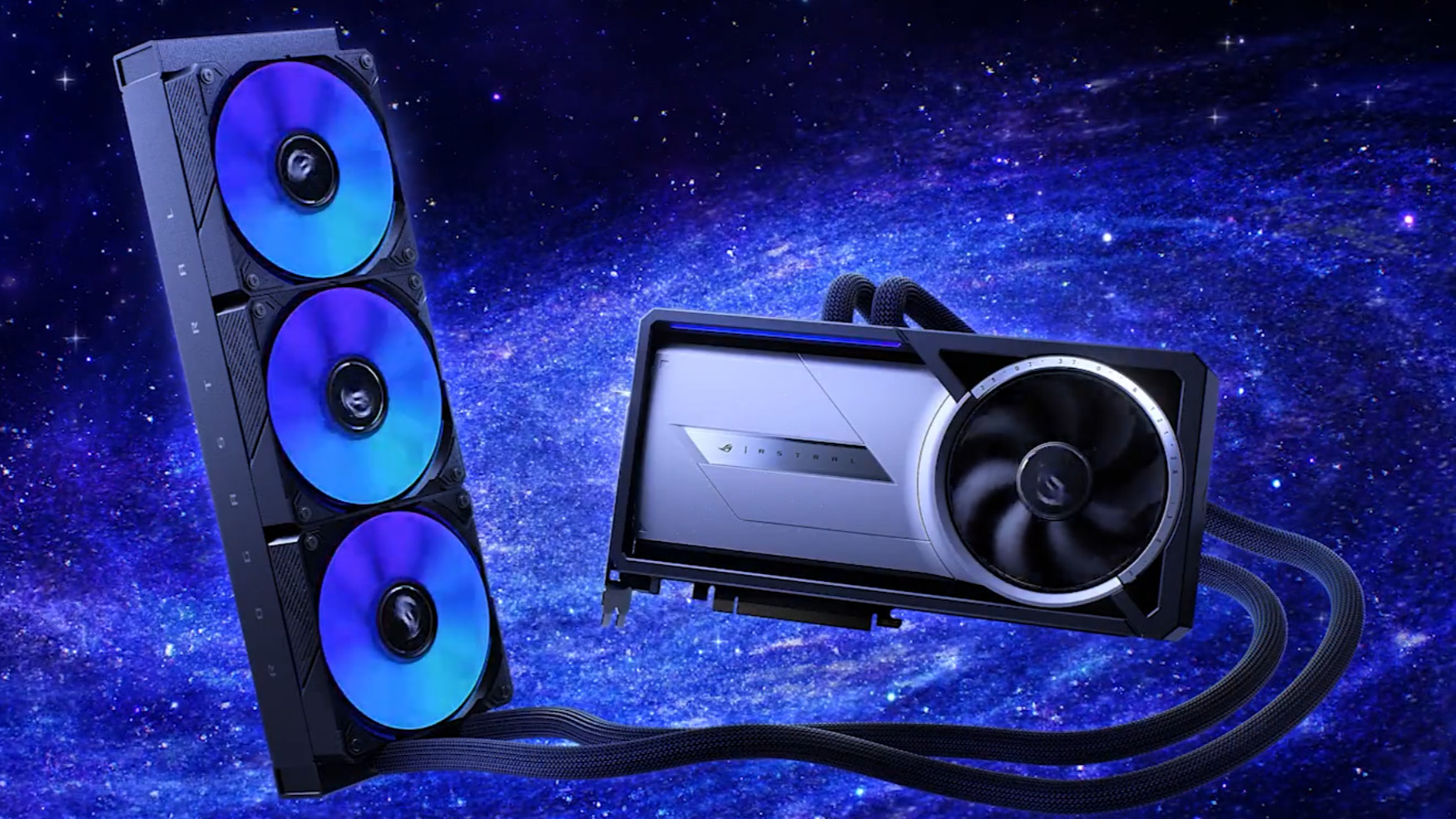Scared that your high-end Nvidia GPU might experience a cable-melting disaster? Asus has a new power monitoring feature to calm your fears
For now this is ROG Astral and Matrix models only, meaning RTX 5090, 5080 and 4090

- The latest version of Asus GPU Tweak III comes with a nifty new feature
- Power Detector+ warns you if any of the pins on your graphics card’s power connector have too many amps flowing through them
- That could lead to a scenario where the power cable melts, as we’ve seen in reports, so the warning should help you avoid a potential bad outcome
Asus has released a new version of its GPU software suite that adds what could be a very useful – or indeed critical – warning for when temperatures run high with the graphics card, and a power connector melting disaster might occur.
The latest version of the GPU Tweak III software comes with the Power Detector+ warning function, which Asus notes is exclusive to ROG Astral and Matrix graphics cards.
The ROG Astral models are the RTX 5090 and 5080, and the ROG Matrix is the RTX 4090 last-gen flagship.
As VideoCardz reports, the idea is that the software monitors the power cable, specifically the amps value for the pins (inside the connector) plugged into the port on your graphics card. Should there be a problem with one (or more) of the pins not being seated properly – and the value either being zero or rising above 9 amps – the utility will flag up a warning.
The cable not being seated properly in this way is a possible scenario in which the power connector could end up seriously overheating to the point where it melts, as we’ve seen reported in the past with some Nvidia GPUs.
This means that when you get this warning, you can shut down your PC swiftly, and then check the power cable, perhaps disconnecting and then plugging it back in more firmly. Hopefully, that’ll resolve any issue and avoid a cable melt incident that could damage the GPU.

Analysis: More of this kind of monitoring, please – although it’s in the pipeline elsewhere
Interestingly, the GPU Tweak software is a utility that can be used with all GPUs, AMD or Nvidia, and not just models from Asus either. However, there’s only support for this power-related warning provided for the Asus ROG RTX 5090 and 4090 flagships, and the RTX 5080 Astral, as noted – at least for now.
Get daily insight, inspiration and deals in your inbox
Sign up for breaking news, reviews, opinion, top tech deals, and more.
Perhaps the graphics card maker will expand this support in time, as it’s undoubtedly a useful warning system to have – and cable melting reports are not exclusive to these models.
(As well as reports of this issue with the RTX 5090, I should note that there have also been similar claims made with RTX 5080 models, too – but there could be all sorts of factors at play here, as we’ve discussed in the past. Clearly, though, the flagship GPUs will always be in the most perilous situations, power connector-wise, given the vast amount of wattage they command – particularly if you’re going to overclock these beasts of desktop graphics cards).
Hopefully, other vendors will climb aboard this power warning bandwagon, although some gamers have already been using the HWiNFO tool to monitor the amps of their power cable’s pins. Note that this functionality for HWiNFO is only in beta testing right now (and also requires a second utility, RivaTuner, to work).
The long and short of it is that fully fledged and tested support will hopefully be in HWiNFO before too long, with any luck. The more widespread this kind of monitoring can be made, the better.
You might also like...
- Nvidia RTX 5060 Ti price rumor is what all gamers want to hear – these models may be cheaper than RTX 4060 Ti equivalents, especially the 16GB GPU
- If the AMD Radeon RX 9060 XT comes with a sub-$400 price tag, it might be the best-value graphics card PC gamers have ever seen
- Nvidia releases stats that prove DLSS and Frame Generation are here to stay - sorry, angry gamers
Darren is a freelancer writing news and features for TechRadar (and occasionally T3) across a broad range of computing topics including CPUs, GPUs, various other hardware, VPNs, antivirus and more. He has written about tech for the best part of three decades, and writes books in his spare time (his debut novel - 'I Know What You Did Last Supper' - was published by Hachette UK in 2013).
You must confirm your public display name before commenting
Please logout and then login again, you will then be prompted to enter your display name.